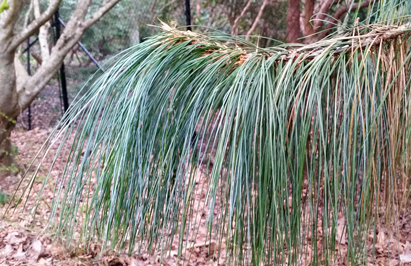
| QUICK LINKS: |
|
|
|
Pines are conifers in the Genus Pinus. They have relatively long needle-like leaves that are bound together in groups of two, three, or five by a fascicle (Fig. 1, Fig. 2). The female cones are woody and have spirally-arranged scales that each hold two seeds. Generally the mature cones open to release their seeds while on the tree, however, some cones only open when exposed to fire (serotinous cones)(Fig.3).
Pine cones have woody scales that radiate in a helical pattern from the central axis of the cone. When the cone is closed (Fig. 4), the exposed portion of the scale is the apophysis (Fig. 5). The raised central portion of the apophysis is the mucro and the central portion of the mucro is the umbo which often has a prickle.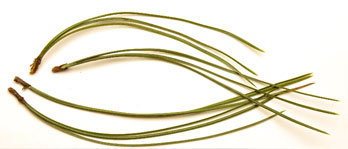
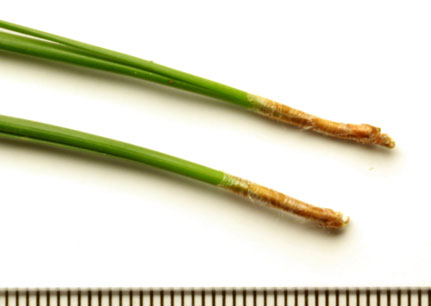
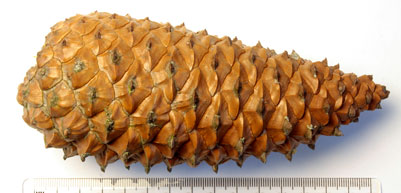
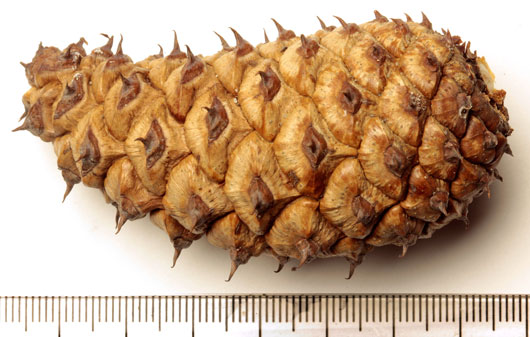
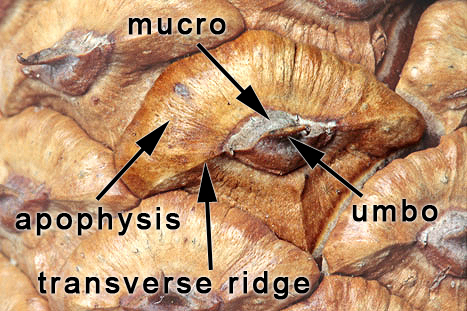
A. In our study area pines will have either two, three, or five needles in a fascicle (Pines Key 1). The majority of pines in Victoria are two needle pines (Fig. 6).
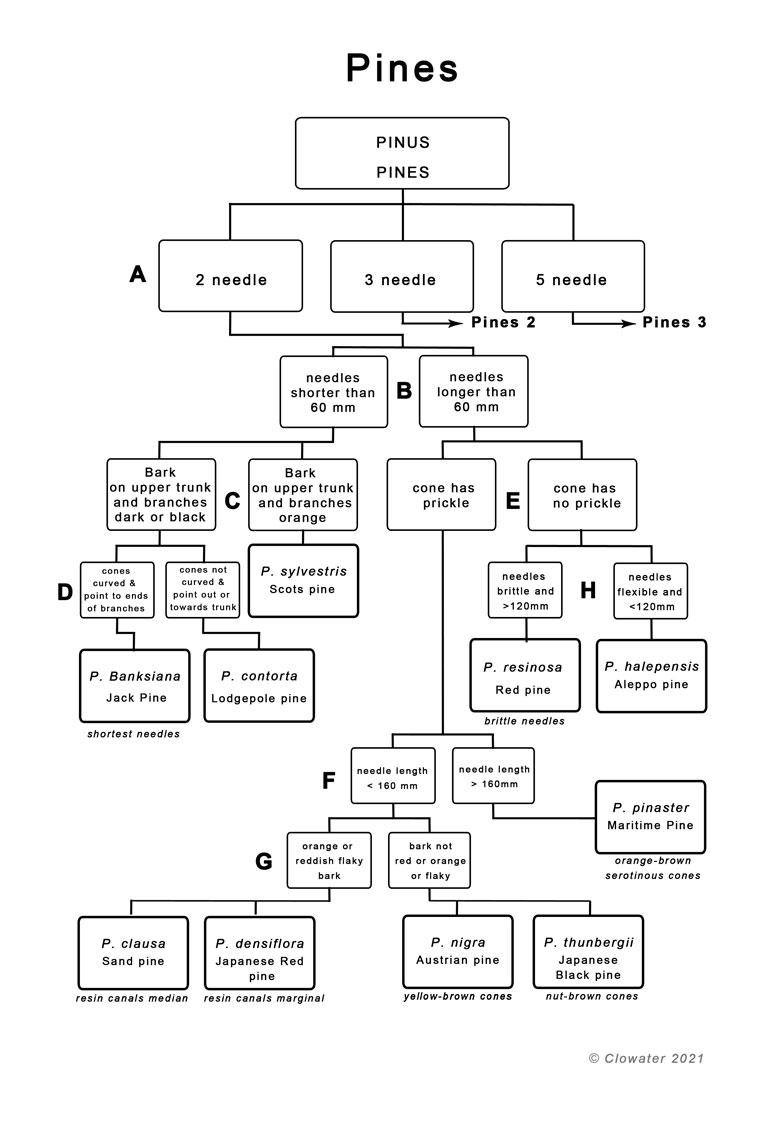
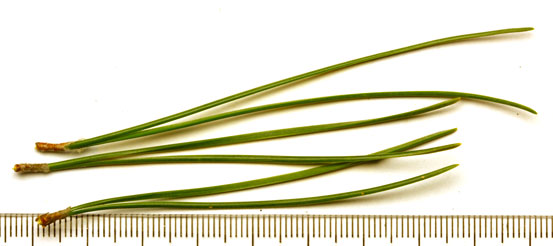
B. C. Of the trees with needles less than 60mm long, one species has extensive orange flaky bark on the upper trunk and branches. This species is the Scotts Pine (Pinus sylvestris) (Fig. 7, Fig. 8).
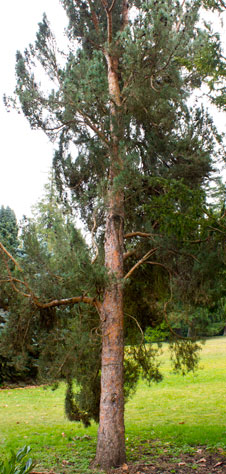
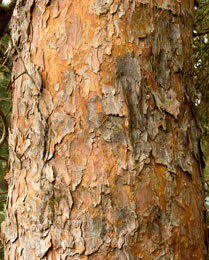
D. To determine the difference between Jack Pine (Pinus banksiana) and Shore Pine (Pinus contorta) examine the shape of the cones and their orientation on the branchlets. Jack Pine has unique curved horn-shaped cones (Fig. 9) that are attached so that their ends point toward the end of the branchlet (Fig. 10). Pinus contorta cones are not curved (Fig. 11), are armed with a sharp prickle, and tend to point perpendicular to the branch or towards the trunk of the tree (Fig.12).
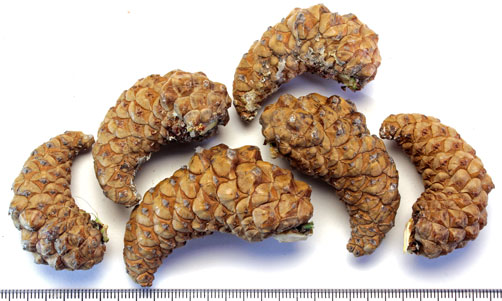
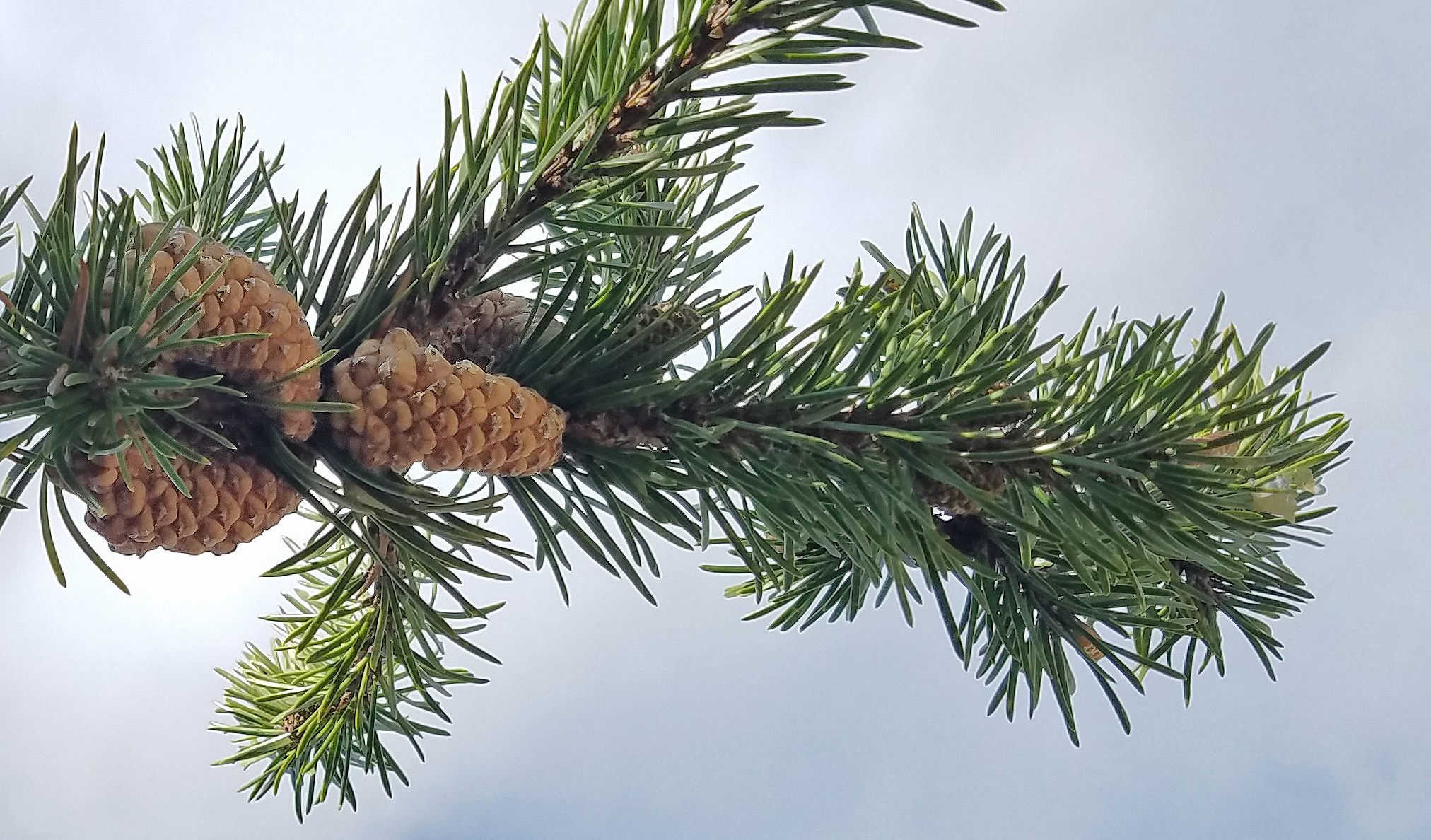
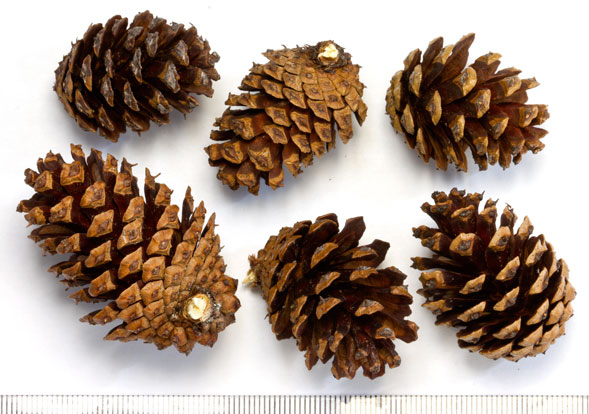
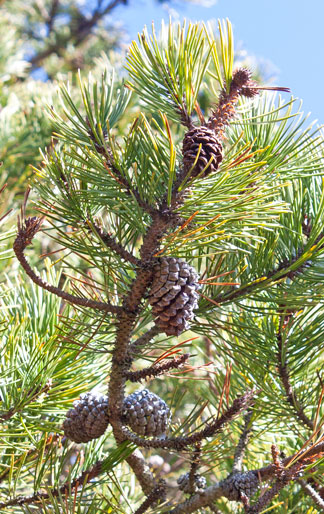
E. F. We only have one 2-needle pine that has cones with prickles and needles longer than 160 mm, the Maritime Pine (Pinus pinaster). The cones of this species are serotinous, glossy orange-brown and 70-250 mm long (Fig. 3).
G. Among the pines with needles less than 160mm and cones with prickles, some have distinctive orangish flaky bark (Fig. 8) like the Scotts Pine. Pinus clausa, the Sand Pine is a very rare species in Victoria, with only one known occurrence. Pinus densiflora the Japanese Red Pine is more common, both share orangish flaky bark, but differ in the position of the resin canals. The Sand pine has median resin canals, while the Japanese Red Pine has marginal resin canals.
The two-needle pines with needle length greater than 160mm and black or gray bark, are the Austrian Black Pine (Pinus nigra) and the Japanese Black Pine (Pinus Thunbergii). The Austrian Black Pine is one of the most common pines planted in Victoria. When mature, its buff-yellow mature cones are a good characteristic to look for, while the Japanese Black Pine has brown-gray cones. In the spring the Japanese Black pine has striking long white terminal shoots that look like candles (fig.13).
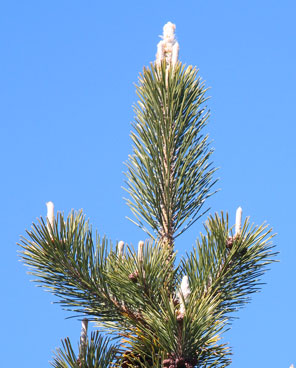
There are seven species of three-needle pines that can be seen in the greater Victoria area (Key 2). One of the most distinct species is the Lacebark Pine (Pinus bungeana). It has cones shorter than 150 mm and the shortest needles (< 90 mm) of the local three-needle species, but can be easily recognized by it's starkly white patterned bark (Fig. 14).
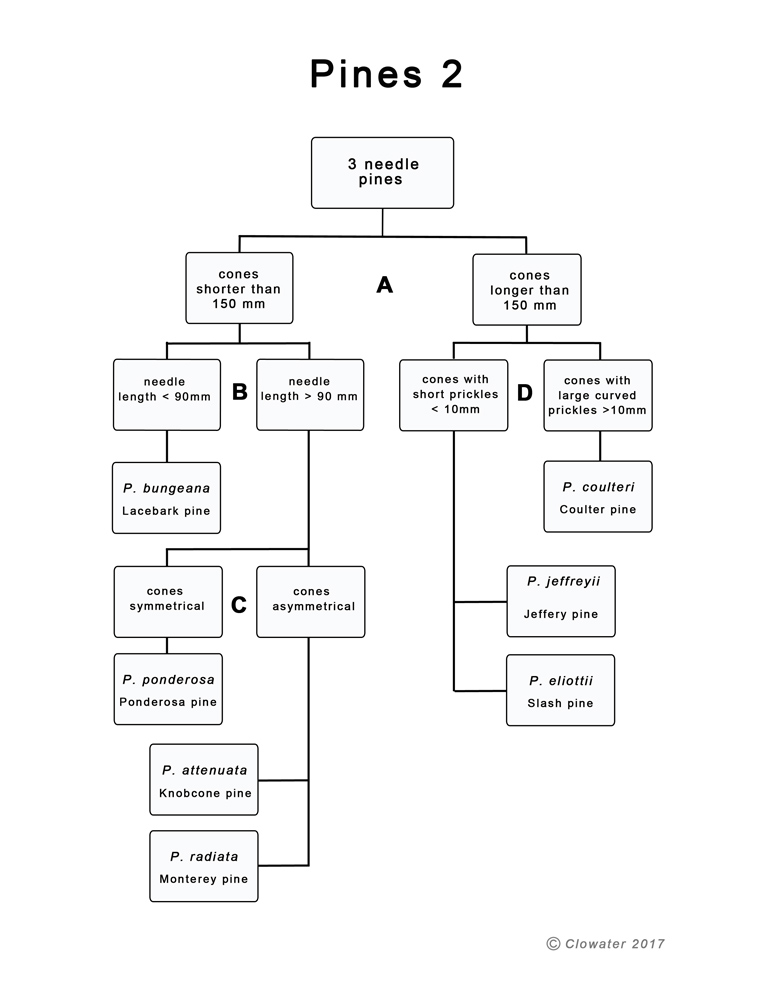
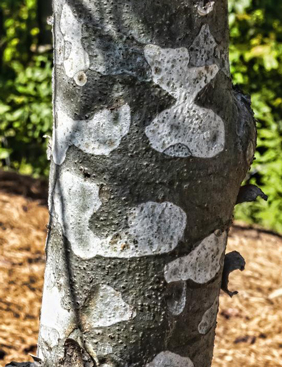
B. There are three three-needle pines that have cones shorter than 150mm and needles longer than 90mm (Key 2). Two species have distinctly asymmetrical cones, the Knobcone Pine (Pinus radiata), and the Monterey Pine (Pinus radiata) (Fig. 15, 16)
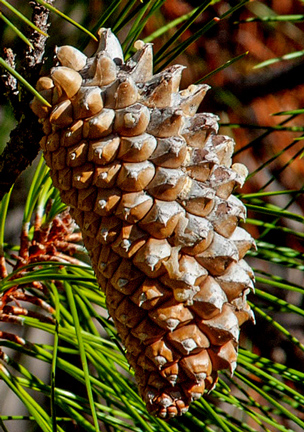
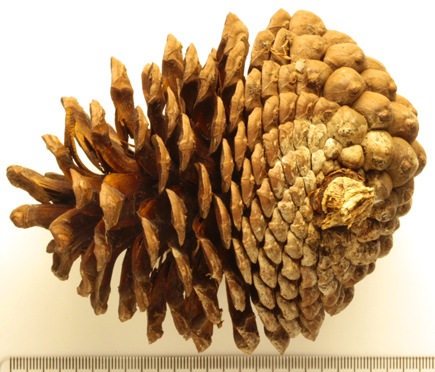
The Ponderosa Pine has more symmetrical cones (Fig. 17).
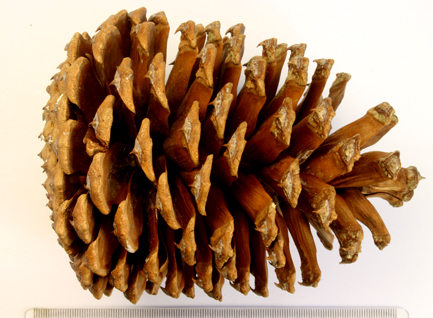
C. There are three species of pines that have cones larger than 150 mm and one has distinctive long curved and sharp prickles (> 10mm), the Coulter Pine (Pinus coulteri).
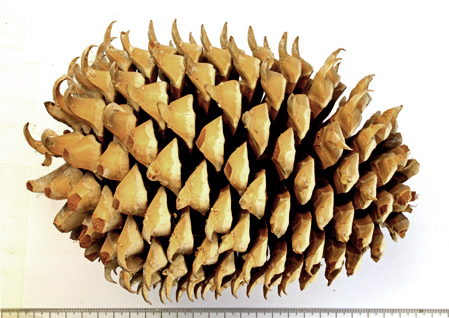
The other two species have cone scale prickles less than 10 mm long. The Slash Pine (Pinus elliottii) is a pine of the southern states from southern Mississippi to Florida (Fig. 19). The other is the Jeffrey Pine (Pinus jeffreyi) of southern Oregon and down through California (Fig. 20).
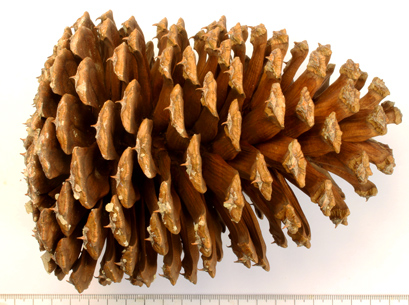
A. There are eight species of five-needle pines the greater Victoria area. The Bristlecone pine (Pinus aristata) is the only species with needles less than 40 mm long (Fig. 1). It is sometimes referred to as a "foxtail" pine.
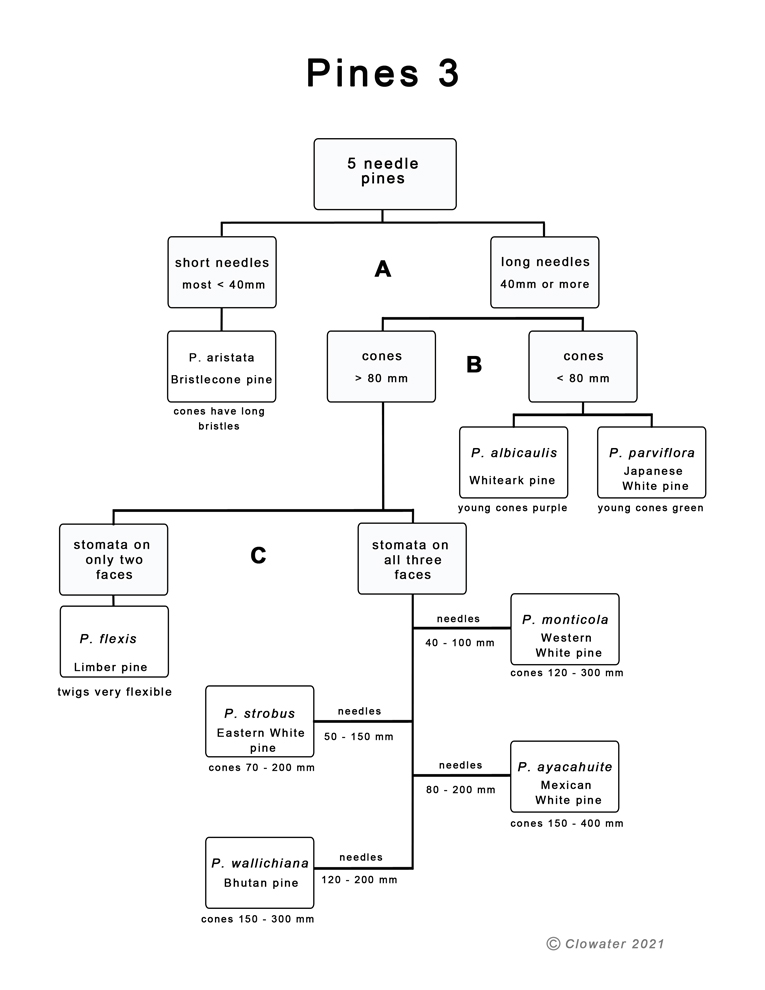
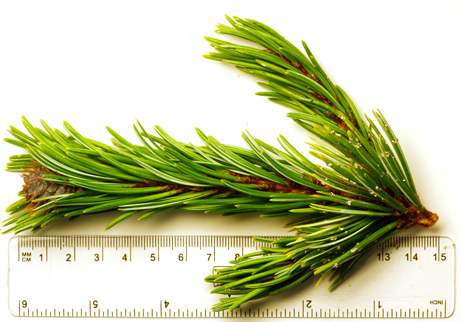
A. B. The Whitebark pine (Pinus albicaulis) is a native tree of mainland British Columbia, its young cones are purple, and it has bands of stomata on all three faces of its needles. The Japanese White pine (Pinus parviflora) is a native of Japan, its young cones are green, and it has bands of stomata only on the two ventral faces of its needles.
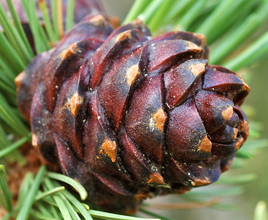
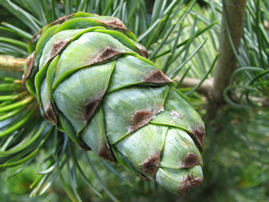
B. C. Among the five-needle pines with cones longer than 80 mm, only the Limber Pine (Pinus flexis) has lines of stomata only on the two ventral (inner) faces of their needles. The other four species have lines on all three of the needle faces.
Among the remaining four species, the Butan Pine (Pinus wallichiana) has distinctive weeping foliage (Fig. 24). The Mexican White Pine (Pinus ayacahuite) has the largest cones, up to 400 mm long. The Western White Pine (Pinus montecola) and the Eastern White Pine (Pinus strobus) have much overlap in their needle and cone lengths and are best differentiated by the phyllotaxis of their cones. The Western White Pine having a higher phyllotatic order than the Eastern White pine.
